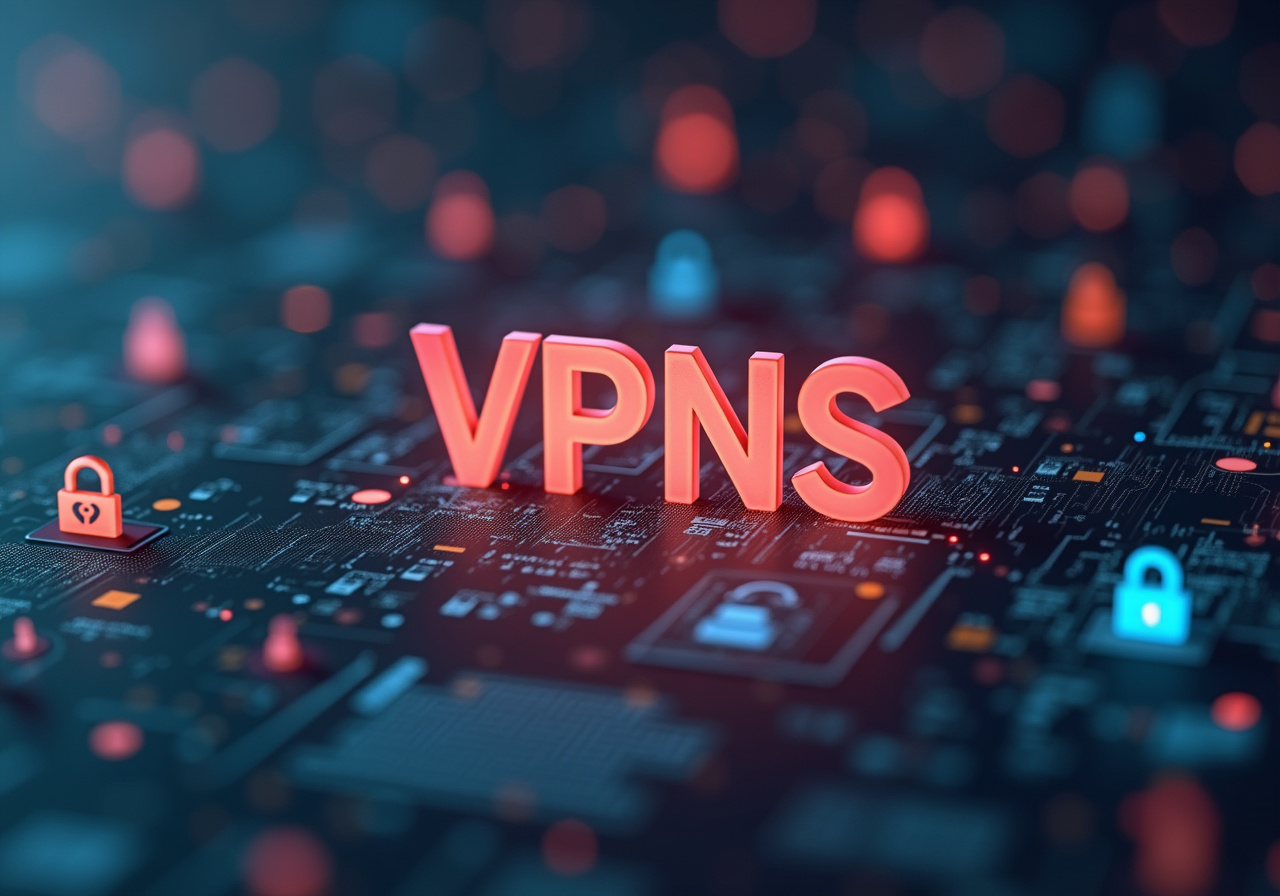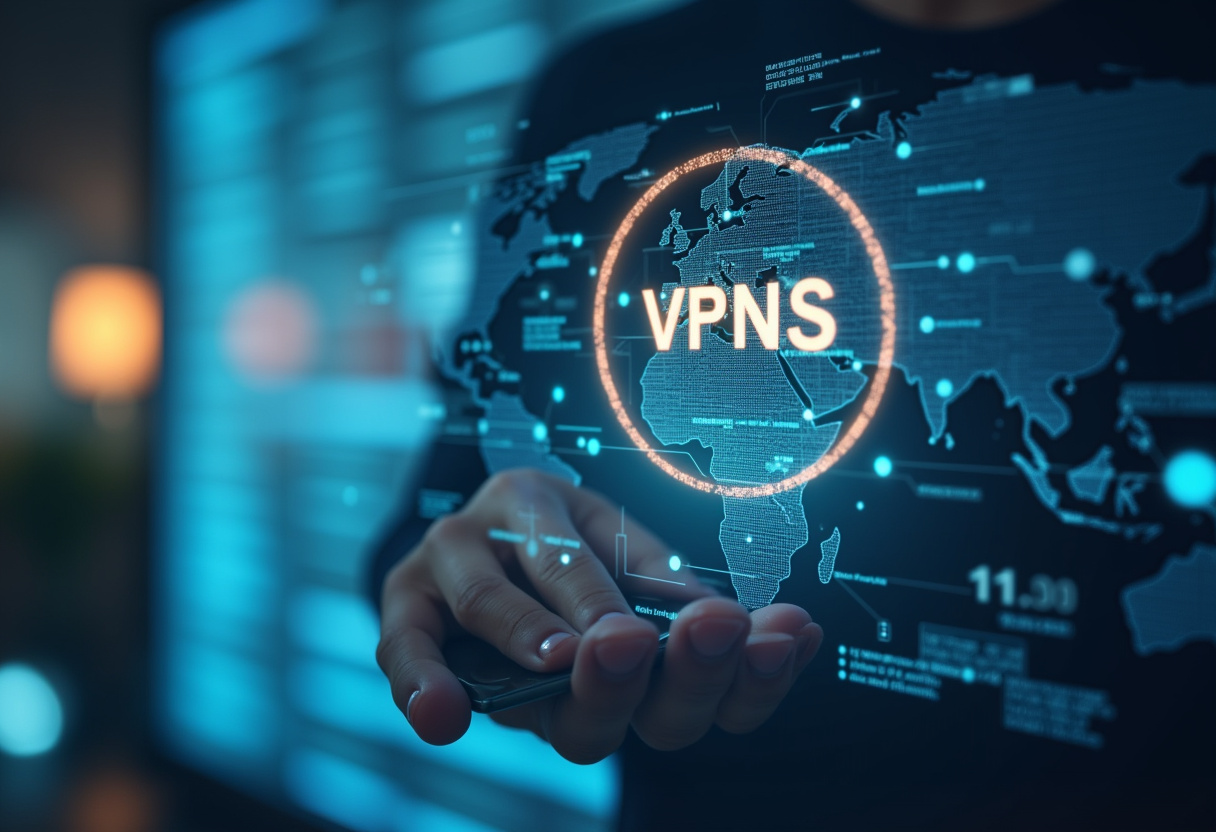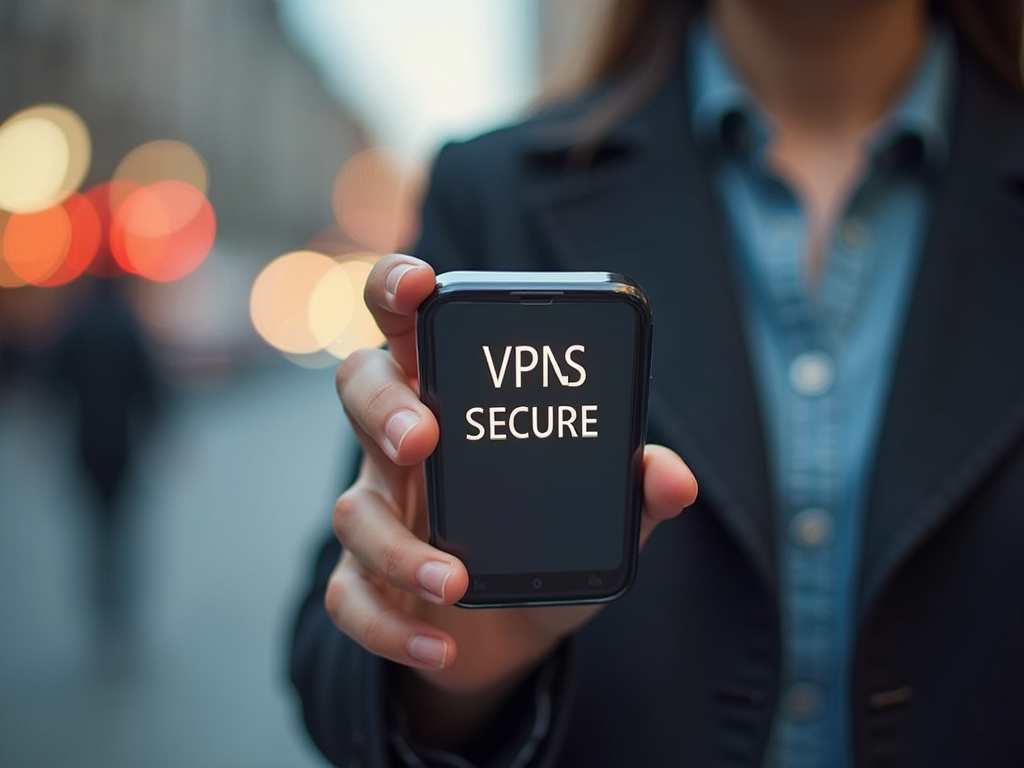VPNs for Language Translation Apps: Securing User Information

Table of Contents
Protecting Your Translations: The Role of VPNs
In today's interconnected world, where instantaneous communication transcends geographical boundaries, language translation apps have emerged as indispensable tools for individuals and organizations alike. These applications, leveraging sophisticated algorithms and machine learning techniques, empower users to seamlessly convert text, speech, and even images across a vast array of languages. From facilitating international business collaborations to enabling personal connections across cultures, language translation apps have revolutionized the way we interact and engage with the global community.
However, this convenience and accessibility come with inherent risks, particularly concerning the security and privacy of user information. The very nature of these apps, which involves processing and transmitting sensitive data, including personal conversations, confidential documents, and proprietary information, raises significant concerns about unauthorized access, data breaches, and potential misuse by malicious actors. As users increasingly rely on translation apps for both personal and professional communication, it becomes imperative to address these concerns and implement robust security measures to safeguard user data.
In this context, Virtual Private Networks (VPNs) have emerged as a critical component in fortifying the security posture of language translation apps and protecting user privacy. A VPN acts as a secure, encrypted tunnel that shields user data from prying eyes and unauthorized access. By routing user traffic through a remote server and masking the user's IP address, a VPN effectively anonymizes the user's online activity, making it significantly more difficult for hackers, surveillance agencies, or other malicious entities to intercept or track their communications.
The integration of VPNs with language translation apps offers a multi-layered approach to enhancing user information security and data privacy. Firstly, it ensures that all data transmitted between the user's device and the translation app's server is encrypted, preventing eavesdropping and data interception. This is particularly crucial when users are accessing the app over public Wi-Fi networks, which are notoriously vulnerable to cyberattacks.
Hackers often exploit the lack of security on public Wi-Fi networks to intercept unencrypted data, including usernames, passwords, and sensitive personal information. By using a VPN, users can effectively encrypt their data, rendering it unreadable to potential eavesdroppers, even on unsecured networks. Secondly, a VPN masks the user's IP address, making it difficult to trace the user's location or identify their device.
This is particularly important for individuals who value their anonymity or who live in countries with restrictive internet censorship policies. By concealing their IP address, users can prevent websites and online services from tracking their browsing habits and collecting personal information without their consent. This also helps to protect them from targeted advertising, price discrimination, and other forms of online manipulation.
Thirdly, a VPN can help users bypass geo-restrictions and access translation services that may be blocked or unavailable in their region. Some language translation apps may restrict access to certain features or languages based on the user's location. This can be frustrating for travelers or individuals living in countries with internet censorship, who may be unable to access the full range of translation services they require.
By connecting to a VPN server in a different country, users can effectively spoof their location and bypass these restrictions, gaining access to the full functionality of the translation app. Beyond these core security and privacy benefits, the use of VPNs in conjunction with language translation apps also provides an added layer of translation data protection. Translation data, which includes the text, speech, or images being translated, can often contain sensitive information, such as personal details, confidential business communications, or proprietary research data.
By encrypting this data and routing it through a secure VPN server, users can significantly reduce the risk of data breaches or leaks. This is especially important for organizations that use language translation apps to communicate with international clients or partners, as it helps to protect their confidential information and maintain a competitive edge. Furthermore, the implementation of VPNs can contribute to compliance with data privacy regulations, such as the General Data Protection Regulation (GDPR) and the California Consumer Privacy Act (CCPA).
These regulations mandate that organizations take appropriate measures to protect user data and ensure its confidentiality, integrity, and availability. By integrating VPNs with language translation apps, organizations can demonstrate their commitment to data privacy and reduce the risk of regulatory penalties. In essence, VPNs provide a comprehensive security solution for language translation app users, safeguarding their personal information, protecting their translation data, and ensuring compliance with data privacy regulations.
Why Language Translation Apps Need Enhanced Security
The benefits of using VPNs for language translation apps extend far beyond simply enhancing security and privacy; they encompass improved user experience, circumventing internet restrictions, and bolstering protection against online threats. One significant advantage lies in the potential for optimized connection speeds and reduced latency. When users connect to a VPN server strategically located closer to the translation app's server, they frequently experience faster translation speeds and a noticeable reduction in lag.
This enhancement is particularly crucial for real-time translation services, such as voice translation or video conferencing, where even minimal delays can disrupt the natural flow of communication and hinder effective interaction. Imagine participating in a vital international business meeting where real-time translation is essential; a laggy or slow translation app could lead to misunderstandings, missed opportunities, and ultimately, a less productive outcome. A VPN effectively mitigates this risk by optimizing the connection pathway and ensuring that translation data is transmitted quickly and efficiently.
Beyond improving connection speeds, VPNs also play a vital role in circumventing internet throttling, a practice occasionally employed by internet service providers (ISPs) to deliberately slow down certain types of traffic, such as video streaming, file sharing, or even traffic originating from specific applications. While ISPs may justify this practice as necessary for managing network congestion, it can significantly impact the performance of language translation apps and hinder the user's ability to access and utilize these services effectively. By masking the user's IP address and encrypting their traffic, a VPN effectively prevents ISPs from identifying and throttling their connection.
This ensures that users can access translation services at optimal speeds, regardless of their ISP's policies or potential attempts to restrict their bandwidth. For users who rely heavily on translation apps for their daily communication or work, this can be a game-changer, allowing them to maintain consistent and reliable access to essential services. The ability to access region-locked content is another compelling advantage of using VPNs with language translation apps.
Many apps offer variations in features or content depending on the user's geographical location. Translators or language learners might want to access sources or features that are not available in their own country. For example, some apps may offer access to a broader range of languages or dialects in certain regions.
Perhaps an app offering a specific dialect is only available in that region. By connecting to a VPN server in the desired country, users can effectively spoof their location and gain access to this region-locked content. This can be particularly useful for language learners who wish to immerse themselves in a specific language or culture, as it allows them to access authentic materials and resources that would otherwise be inaccessible.
Furthermore, VPNs provide enhanced protection against phishing attacks and malware threats, common dangers in the digital landscape. Phishing attacks, which involve deceptively tricking users into revealing sensitive information, remain a persistent threat. By encrypting user data and masking their IP address, VPNs make it far more challenging for cybercriminals to target users with phishing schemes.
Additionally, many VPNs offer built-in malware protection, actively scanning downloaded files and blocking access to malicious websites, providing a valuable extra layer of security. This proactively shields users from malware infections that could compromise their data or even their entire device. Selecting the right VPN for use with a language translation app requires careful consideration of several factors, including security features, speed, server locations, and the VPN's privacy policy.
A reputable VPN will offer robust encryption, a strict no-logs policy, and a wide array of server locations across the globe. It should also be fast enough to support real-time translation services without noticeable lag or buffering. Prioritizing transparency regarding data handling practices is crucial, as is seeking a VPN provider with a proven track record of prioritizing user privacy.
While VPNs are powerful tools, it is essential to acknowledge and address some potential challenges associated with their integration into language translation apps.
Key VPN Features for Translation App Security
The implementation of VPNs for language translation apps constitutes a significant stride toward enhancing user information security, yet it is imperative to recognize that it is not a panacea, nor the sole element in a comprehensive security strategy. A holistic approach necessitates the adoption of a multi-layered security framework that encompasses various complementary measures to fortify data protection and ensure user privacy. One such measure is the implementation of strong encryption protocols within the language translation app itself.
While VPNs encrypt data transmitted between the user's device and the VPN server, the data may still be vulnerable if the app itself does not employ robust encryption protocols. End-to-end encryption, where data is encrypted on the user's device and decrypted only by the intended recipient, provides an additional layer of security, ensuring that even if the data is intercepted, it remains unreadable to unauthorized parties. Furthermore, the implementation of secure authentication mechanisms is crucial to prevent unauthorized access to user accounts.
Weak passwords and easily guessable security questions are prime targets for hackers. Language translation apps should encourage users to create strong, unique passwords and implement multi-factor authentication (MFA), which requires users to provide multiple forms of identification before granting access to their accounts. MFA can significantly reduce the risk of account compromise, even if a hacker manages to obtain a user's password.
Regular security audits and penetration testing are essential for identifying and addressing vulnerabilities in the language translation app's security architecture. Security audits involve a comprehensive review of the app's code, infrastructure, and security policies to identify potential weaknesses. Penetration testing involves simulating real-world attacks to assess the effectiveness of the app's security measures.
By regularly conducting these assessments, developers can proactively identify and fix vulnerabilities before they can be exploited by attackers. Data minimization is another important principle to consider. Language translation apps should only collect and store the data that is strictly necessary for providing their services.
Collecting excessive amounts of data increases the risk of data breaches and privacy violations. By minimizing the amount of data collected, apps can reduce their attack surface and simplify their compliance obligations. User education plays a vital role in promoting responsible usage and safeguarding user information.
Many users are unaware of the security risks associated with using language translation apps and may not take the necessary precautions to protect their data. Language translation apps should provide users with clear and concise information about the security risks involved and offer guidance on how to mitigate these risks. This includes educating users about the importance of using strong passwords, avoiding public Wi-Fi networks, and being wary of phishing attacks.
In addition to these technical and procedural measures, it is also important to establish clear and transparent data privacy policies. Users should be informed about how their data is collected, used, and shared. Language translation apps should also provide users with the ability to control their data and exercise their rights under data privacy regulations, such as the GDPR and the CCPA.
This includes the right to access, correct, and delete their data. The integration of VPNs with language translation apps is a valuable tool for enhancing user information security, but it is only one piece of the puzzle. A comprehensive security strategy requires a multi-layered approach that encompasses strong encryption, secure authentication, regular security audits, data minimization, user education, and transparent data privacy policies.
By implementing these measures, language translation apps can provide users with a secure and trustworthy experience. It's also important to note that users themselves have a responsibility to protect their own data. This includes using strong passwords, avoiding public Wi-Fi networks, and being cautious about the information they share online.
By taking these precautions, users can significantly reduce their risk of becoming victims of cyberattacks. Data privacy is a collaborative effort, requiring both language translation app providers and users to work together to protect sensitive information. Ignoring the collaborative aspect leaves doors open where vulnerabilities can be exploited and sensitive information exposed.
VPNs for Services: Enhancing Security and Privacy
Data privacy, as it relates to language translation app usage, deserves particular attention given the sensitive nature of the information often processed and transmitted. Translation data frequently encompasses personal conversations, confidential documents, and proprietary business information, thereby making robust data privacy practices paramount. A VPN, while contributing to data privacy by encrypting traffic and masking IP addresses, serves as just a single component within a broader data privacy framework.
The overarching principle of data minimization dictates that language translation apps should collect and retain only the data that is strictly and demonstrably necessary for the provision of their core services. Gathering excessive or superfluous data heightens the risk of data breaches, amplifies potential privacy violations, and increases the complexities associated with regulatory compliance. By adhering to the principle of data minimization, apps can substantially reduce their attack surface, streamline their compliance efforts, and enhance user trust.
Transparency concerning data handling practices is absolutely essential for building and maintaining user confidence. Language translation apps should articulate clearly and concisely how user data is collected, utilized, stored, and, if applicable, shared with third parties. This information should be readily accessible in a plain-language privacy policy, devoid of legal jargon and easily understandable by the average user.
Within the privacy policy, users should be explicitly informed about the types of data collected (e.g., text input, voice recordings, usage patterns), the purposes for which the data is used (e.g., improving translation accuracy, personalizing user experience, serving advertisements), and the measures taken to protect the data from unauthorized access and disclosure. Providing users with granular control over their data is another crucial aspect of data privacy. Language translation apps should empower users to manage their privacy settings and exercise their rights granted under applicable data privacy regulations, such as the GDPR and the CCPA.
This includes providing users with the ability to access, correct, and delete their personal data. Furthermore, users should have the option to opt out of data collection for specific purposes, such as targeted advertising or personalized recommendations. Offering clear and accessible mechanisms for exercising these rights demonstrates a commitment to user autonomy and fosters a sense of trust.
The use of anonymization and pseudonymization techniques can further enhance data privacy. Anonymization involves irreversibly stripping data of any identifying information, rendering it impossible to link the data back to a specific individual. Pseudonymization involves replacing identifying information with pseudonyms or identifiers, making it more difficult to identify individuals but still allowing for data analysis and processing.
These techniques can be used to protect user privacy while still allowing language translation apps to improve their services and personalize the user experience. Data retention policies should be clearly defined and strictly enforced. Language translation apps should only retain user data for as long as it is necessary to fulfill the purposes for which it was collected.
Once the data is no longer needed, it should be securely deleted or anonymized. Establishing and adhering to well-defined data retention policies helps to minimize the risk of data breaches and ensures compliance with data privacy regulations requiring that data not be kept indefinitely. Regular privacy audits and assessments are essential for ensuring ongoing compliance with data privacy regulations and identifying potential vulnerabilities in data handling practices.
These audits should be conducted by independent third-party experts to ensure objectivity and impartiality. Regular assessments help to identify areas for improvement in data privacy practices and ensure that language translation apps are continuously adapting to evolving data privacy regulations and best practices. These measures reinforce how data privacy is a primary concern where safe use of language translation apps are concerned.
In conclusion, the integration of VPNs with language translation apps represents a significant and valuable step forward in bolstering user information security and safeguarding data privacy in an increasingly interconnected digital world. However, it is crucial to recognize that VPNs are not a singular solution, but rather a component within a broader, multi-faceted security and privacy strategy. A holistic and effective approach requires a comprehensive framework that encompasses strong encryption protocols within the app itself, secure authentication mechanisms, regular security audits and penetration testing, data minimization practices, transparent data privacy policies, and robust user education initiatives.
By implementing these complementary measures, language translation app providers can create a more secure and trustworthy environment for their users, fostering greater confidence and encouraging responsible usage. Data privacy, in particular, warrants careful consideration, given the inherently sensitive nature of the information often processed and transmitted through language translation apps. Adhering to the principle of data minimization, providing granular control over user data, employing anonymization and pseudonymization techniques, establishing clear data retention policies, and conducting regular privacy audits are all essential elements of a robust data privacy framework.
Transparency regarding data handling practices is paramount for building and maintaining user trust. Language translation apps should clearly articulate how user data is collected, used, and shared, and provide users with readily accessible mechanisms for exercising their rights under applicable data privacy regulations. User education plays a critical role in empowering users to make informed decisions about their data privacy and take proactive steps to protect themselves from online threats.
By providing users with clear and concise information about the security risks involved and offering guidance on how to mitigate these risks, language translation apps can foster a culture of responsible usage and enhance overall security. Ultimately, ensuring user information security and data privacy in the context of language translation apps is a shared responsibility. Language translation app providers must prioritize security and privacy at every stage of the development lifecycle, from design and implementation to testing and ongoing maintenance.
Users, in turn, must take proactive steps to protect their own data, such as using strong passwords, avoiding public Wi-Fi networks, and being cautious about the information they share online. By working together, language translation app providers and users can create a more secure and trustworthy digital ecosystem, enabling seamless communication and collaboration across cultures and languages while safeguarding sensitive information from unauthorized access and malicious use. The future of language translation apps hinges on the ability to strike a delicate balance between innovation and security.
As technology continues to evolve and new threats emerge, it is imperative that language translation app providers remain vigilant and adapt their security and privacy practices accordingly. Investing in robust security measures and prioritizing user data privacy is not only ethically responsible, but also strategically sound. In an increasingly competitive market, users are more likely to choose language translation apps that they trust to protect their data.
By prioritizing security and privacy, language translation app providers can build long-term relationships with their users and establish a reputation for trustworthiness, ultimately leading to greater success. So, while a 'translation app VPN' solution improves 'user information security' and 'translation data protection' by focusing on 'data privacy', all parties, developers and end users, must remain vigilant to ensure ultimate safety. The potential of 'VPN for apps' is best realized when it augments, not replaces, other security protocols.
Stay Updated
Get the latest VPN news, tips, and exclusive deals to your inbox.




